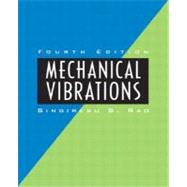
(NOTE: Each chapter concludes with Examples Using MATLAB, C++ Program, Fortran Program, References, Review Questions, Problems, and Design Projects.)
1. Fundamentals of Vibration.
2. Free Vibration of Single Degree of Freedom Systems.
3. Harmonically Excited Vibration.
4. Vibration Under General Forcing Conditions.
5. Two Degree of Freedom Systems.
6. Multidegree of Freedom Systems.
7. Determination of Natural Frequencies and Mode Shapes.
8. Continuous Systems.
9. Vibration Control.
10. Vibration Measurement and Applications.
11. Numerical Integration Methods in Vibration Analysis.
12. Finite Element Method.
13. Nonlinear Vibration.
14. Random Vibration.
Appendix A: Mathematical Relationships.
Appendix B: Deflection of Beams and Plates.
Appendix C: Matrices.
Appendix D: Laplace Transform Pairs.
Appendix E: Units.
Appendix F: Introduction to MATLAB.
References.
Answers to Selected Problems.
Index.
The New copy of this book will include any supplemental materials advertised. Please check the title of the book to determine if it should include any access cards, study guides, lab manuals, CDs, etc.
The Used, Rental and eBook copies of this book are not guaranteed to include any supplemental materials. Typically, only the book itself is included. This is true even if the title states it includes any access cards, study guides, lab manuals, CDs, etc.